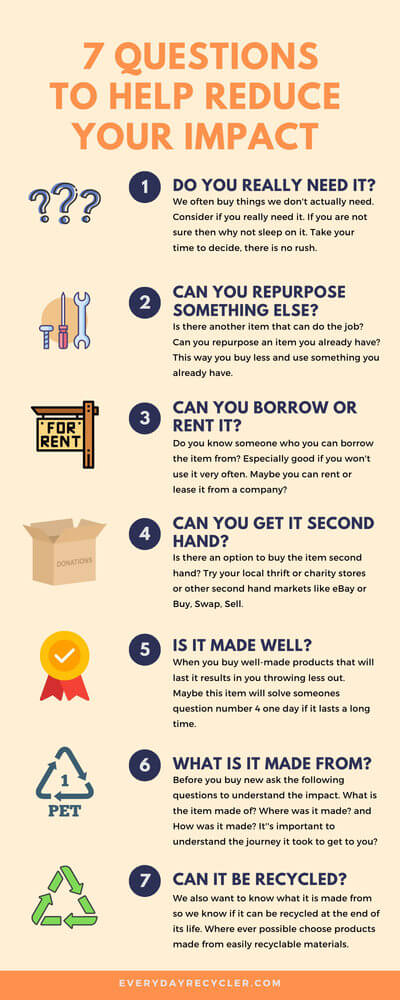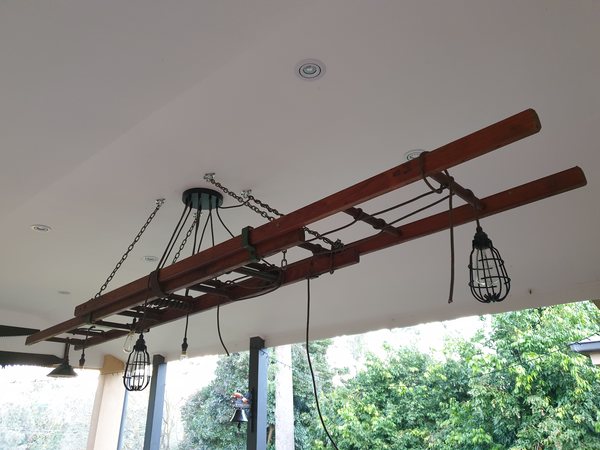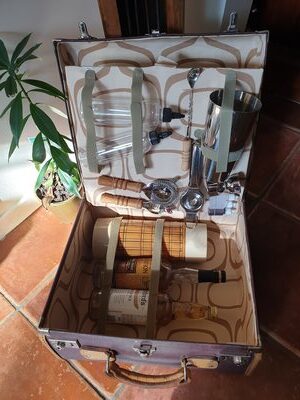We’ve all heard the mantra REDUCE REUSE RECYCLE but how do we actually apply this to our lives. Let us show you how starting with how to reduce and reuse and mixing it up a bit by including repair and repurpose.
One of the best times to think about how to reduce, reuse, repair or repurpose an item is at the end of its life. When you have finished using the item and before you throw it in the recycling bin or trash bin. This way you already have the item, and even though it’s a bit too late to reduce, it’s a great time to think about what you can do differently next time.
Below we will give you our tips on how to figure out if an item can be reused or repurposed and what lessons you can learn for next time.
Quick Navigation
How To Reduce Reuse Recycle
REDUCE
Here are our top questions to ask yourself when you are staring your trash in the face!
Did you use the item?
Did you use the item for its intended purpose? In fact, did you use the item at all? We all have those items in our cupboards or maybe the spare room or garage. Good intentions or maybe we get caught up in the moment while on holidays and buy something we don’t really need. A new hobby you want to start and you buy up everything you need only to find you cannot make the time.
There are many examples of this and we should not be too hard on ourselves as we usually have the best intentions at the time. The important thing is to try to change those habits so we can support the reduce reuse recycle mantra.
If you didn’t use the item try to think about why that is. Did you not need it? Was it an impulse buy? Did circumstances chance and you did not have time to use it? Or was it poorly designed for it’s intended use so you never could use it.
Do you actually need to replace the item?
If you were thinking of replacing the item perhaps you could consider if you really need to? Did you use it enough to warrant buying a new one? Is there another way you could achieve the outcome the item provides? Can you borrow or rent one in the future? All of these questions will help you reduce and reuse.
With a growing trend for the circular economy, there are many companies offering solutions by providing rental or lease options.
- Rent the Runway – Rent thousands of designer outfits for those special events. The renting revolution is here. Or look for other clothing rental options in your local area.
- Rent baby clothes – Companies are appearing everywhere that will rent baby clothes to new parents, saving them money while saving the world from more textiles. Try Circos, Belles and babes, Upchoose or Numidian.
- Tools and appliances – Check your local home depot or bunnings for renting that tool or appliance you need for your home project.
- Rent luggage – planning a trip you can even rent your luggage through Rent Luggage.
You might also consider buying a second-hand replacement. There is already so much stuff in the world it is hard to imagine that there isn’t one of everything out there somewhere.
Or if you have time you could make one yourself? You could either repurpose another item or make it from scratch. There are always plenty of how-to videos available online.
Was the item well made?
Did the item break or wear out too quickly. A lot of the things we buy these days are not made to last. If this is the case then make a note of the brand and then look for other brands that might be better.
Long-lasting items are good for the environment because they result in less trash. If they are really good quality they might even change hands many times before their life is over.
What is the item made from? Can it be recycled?
Working out what an item is made from can help you decide if it is a good idea to buy it again or look for an alternative. If the item is made from an easily recyclable material that is great.
Here a few items you should definitely find alternatives for:
- Items made from single-use plastics like straws, plastic bags or plastic cutlery.
- Items made from a difficult to recycle plastics such as PVC, Polystyrene or Styrofoam. Check out Plastic by numbers to learn about the different types of plastics.
- Objects made from multiple materials. This might be a multilayer packaging item such as a pringle can or it might be a toy or kitchen utensil that has many small parts made from different materials like plastic, metal, or mixed materials. All of these will be difficult to recycle.
Many companies are providing better information about the recyclability of their products. Search out these companies when buying something new.

REPAIR
Another R that could be added to reduce reuse recycle is repair. Fortunately, more focus is being put on the importance of this lately. The European Union is leading the way by bringing in “right to repair” rules for household appliances. Let’s hope this trend continues.
Can you repair it?
If it’s something that you need to replace because it is broken or no longer working why not see if the item can be fixed or repaired? This can be tough as often we don’t have the skills to fix something ourselves. However, luckily there is a great deal of information at our fingertips. Try googling how to fix the item and you may just find there are loads of YouTube videos showing you exactly how to do it.
Can someone else repair the item?
If you are not successful or you are not so handy there are many communities bringing the focus back to repair services. Start with the manufacturer of the product and see if they offer a repair service. A great example of a repair shop is Patagonia’s repair service. They operate the largest repair facility in North America and have even released guides to help you repair your own items.
There are also repair cafes opening up all over the world. These are places where volunteers with different types of skills will help you fix an object. Try searching for “Repair Café near me” or “is there a repair café near me”. Better still visit the Repair Cafe website, with more than 2000 locations worldwide you’re bound to find one near you.
REUSE
Deciding if an item can be reused is the next step in the reduce reuse recycle process. It could be sold or you could donate it to a charity, thrift or second-hand store.
Can you sell it yourself?
Giving to charity is an excellent idea; however, sometimes just finding someone who really wants the item is a better solution.
A year or so ago I sold about 2 dozen DVDs and a few music CDs on eBay. It took me about a year and a half to sell them. When I mentioned this to friends, they often said they prefer to give them to charity. Although that is not a bad idea I prefer to get the item to someone who wants it. It’s not that I don’t want to give to the needy, I do plenty of that, I just don’t want to burden charities with more stuff when they already have so much. Have you seen how many DVDs are on the shelves at charity stores?
This doesn’t work for everything but it also doesn’t cost anything to list an item and let it run for a while. Stuff can sit around in our houses for years so what’s another few months. I didn’t make a lot of money either but at least I knew the item would get used again.
There are many people in the world with diverse interests you never know what someone will want. And if it doesn’t sell you can still consider donating to charity, just be sure to make sure it’s suitable.
Donate it to a charity
The most important thing to remember is that charities are not there to take your trash. Charities are created to provide a service, providing affordable items to people in need and using any funds generated to support disadvantaged people.
In providing this service they are giving us an opportunity for our unwanted items to be reused. However, we need to respect this service and not take advantage of it. If you are getting rid of an item because it no longer works and is beyond repair then donating is not the right answer.
How can we do this? Well here are the things to keep in mind when you are deciding if an item can be donated to charity or not:
Quality – Make sure the item is of a good standard. Is not broken, torn, ripped, stained, cracked, worn out, or dangerous in any way.
Clean – Make sure the item is clean before you donate it.
Here’s a good list of what you shouldn’t give to charities:
- Bedding items such as mattresses, stained sheets etc.
- Ripped, torn or stained clothing
- Cracked or broken homewares
- Damaged furniture
- Flammable and hazardous products
- Baby products like car seats
- Large appliances (depends on the charity)
- TV’s and computer monitors, or other e-waste items
- Weapons
- Green or household waste
- Car parts
- Construction materials
Other ways to give things away
If you have an item that is still useful you could try putting it on your nature strip with a “Please take me” sign. Check with your local council or authority just in case, you don’t want to get a fine.
Or you could post the item on a buy, sell or swap group for free. You could maybe even put it on eBay for a zero value auction and see if people are willing to bid on it, you might still make a few dollars out of it. Make sure you are clear and truthful in letting people know what state the item is in.
There are other ways you can donate your old items. Here are a few:
Recycle your old shoes – One World Running in the USA will donate shoes in good condition to those in need and recycle the rest with Nike. Find a location here. There are similar groups in other countries.
Womens Bra’s – Bra’s for Bali collect unwanted bras and donate them to women in Bali. Find more information here.
Old Towels – Try your local dog or animal shelter.
Good quality clothes – You can take any good quality women’s clothes and donate them to Dress for Success. Find your nearest location.
Be sure to check your local community or area. You never know what you will find. There is even a place in New England, USA, that will take a single shoe. They all get collected, matched together and then resold. That sounds like a great game of Concentration.
REPURPOSE
Another R that should be added to reduce reuse recycle is repurposing, also known as upcycling. We love this one as it tends to bring out the artistic side of anyone.
Can you repurpose it?
If you cannot do reduce, repair or reuse it then you might be able to repurpose the item and make it into something you do need. There are millions of repurposing projects out there you can find. You can repurpose or upcycle pretty much anything.
Here are some repurpose ideas or upcycle ideas.
- A really good area for this is clothing. Dying or restyling outfits is a great example. Why not make a dress out of those old curtains if you like the pattern!
- My husband is repurposing an old ladder as a chandelier as we speak, see picture below.
- Turn an old picture frame into a serving tray.
- Make an old suitcase into a picnic basket or mobile cocktail bar. I did this a few years ago it turned out really well.
- Check out this article for some more inspiration Creative reuse upcycling repurposing ideas. I particularly like the old bath seats or the TV aquarium.


RECYCLE
The next step in learning how to reduce reuse recycle is to find out if an object can be recycled. This is a big topic so we will cover this in our next post, How to recycle. Here we will provide an in-depth guide on what you can and cannot include in your curbside recycling.
Help keep our planet green and clean.
Reduce Reuse Repair Repurpose Recycle and Rebuy.














